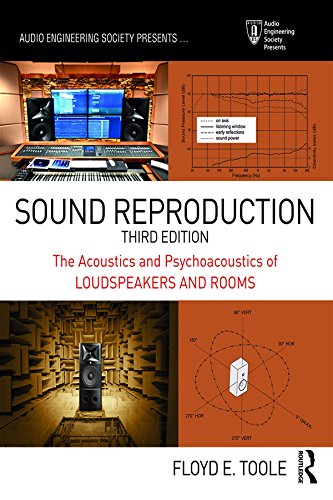Happy New Year! The season of resolutions. Like some of you, I have made it a priority to read more this year. One of those books is going to be Floyd Toole’s Sound Reproduction. Let me preface this by saying I have read this book, but in chapters that were required for a college class. I have never read it in its entirety nor out of personal interest.
Dense, reference books like these can be intimidating and difficult to tackle for any individual. Establishing a personal interest and desire for deeper knowledge has helped me push through its many chapters. In this article, I will share my tips and suggestions for this very challenge. You will also find some of my personal opinions on individual chapters. Hopefully, you find it insightful!
I will be referencing the third edition of this book in this blog.
Before starting at Chapter One…
- The introduction or preface is often overlooked. Toole’s introduction gives an excellent overview of the book in a light and easy-to-read way. His investment in quality audio is evident. It is a section I would highly recommend reading first.
- I had a teacher once recommend reading the last chapter of a reference text before digging into the rest of the book. I found this to be especially helpful for this instance. Chapter 17 of the third edition goes over Hearing loss and Conservation. This was an eye-opening chapter to begin. It gave weight to everything that I read. Chapter 18 is titled Fifty Years of Progress. It is both a hopeful and extensive section. A good first step into the more referential material.
- I have started to highlight things as I read. To some, this might not be a big deal. To book purists like me, this is not an easy habit to cultivate. However, I have found it super helpful in remembering details I want to go back and remember. With such a dense selection of information (460+ pages), I can accept writing in a book for ease of later use.
The first chapter of this book goes over Sound Production versus Sound Reproduction. It is one of my favorite chapters in this book. It does an excellent job of outlining some of Toole’s most fundamental thoughts and ways of thinking. Many of these opinions are shared by a vast majority of our industry.
The Circle of Confusion is first introduced here; something uniquely coined by Toole. This was where I came to terms with a few things about audio. One, sound quality is a gamble when there is a lack of standards. Therefore, we need standards. Two, ‘the notion that recordings are inherently flawless is seriously misguided’, which is a direct quote from the book itself. I think this idea can also be applied to loudspeakers. A truly flawless speaker is simply not realistic. Lastly, and arguably one of the most important takeaways, ‘the delivered art is what matters’. This applies to both live and reproduced sound and has taught me to be appreciative of both.
Now, I am not going to go through each and every chapter of this book. I will allow you to do that for yourself. The next few chapters I will touch upon are also some of my favorites. However, I have to admit that the farther you progress into this book, the more extensive detail and technical information is shared. Chapter four is almost fifty pages long and dense with definitions and specifics. I found this chapter to be invaluable with review and new information. It is delivered in such a fluid and interesting way that avoids the typical dry textbook narrative.
I feel strongly about both chapters four and five. If you are only going to read two chapters from this book, these are my suggestions. These chapters talk about how sound functions. Chapter four takes a stronger physics approach and chapter five dives into how sound functions from a loudspeaker. All of this renders down to the question of ‘what is good sound?’.
The sheer amount of research and experimenting that Floyd Toole has done in an effort to standardize this information is astonishing. He has been a household name for me since beginning my career in sound. He mentions a few other remarkable individuals in his book. Harry F. Olson is one of these individuals. This man’s article titled Direct Radiator Loudspeaker Enclosures heavily influenced the design of my own studio monitors. It is a fascinating article I recommend to all. This text is rich in references to other experiments, research, and articles. Toole does not leave anything out.
Lastly, don’t rush reading a book like this. You need to find some kind of enjoyment when taking on this kind of information. This rule can apply to any heavy audio text you choose to read. The Toole book is commonly required by audio professors in colleges and universities throughout the country so the likelihood of you coming across it is high. So if you do tackle this industry standard, I hope you find it insightful and that you find my observations helpful.
Link to the Harry F Olson article via AES E-Library
